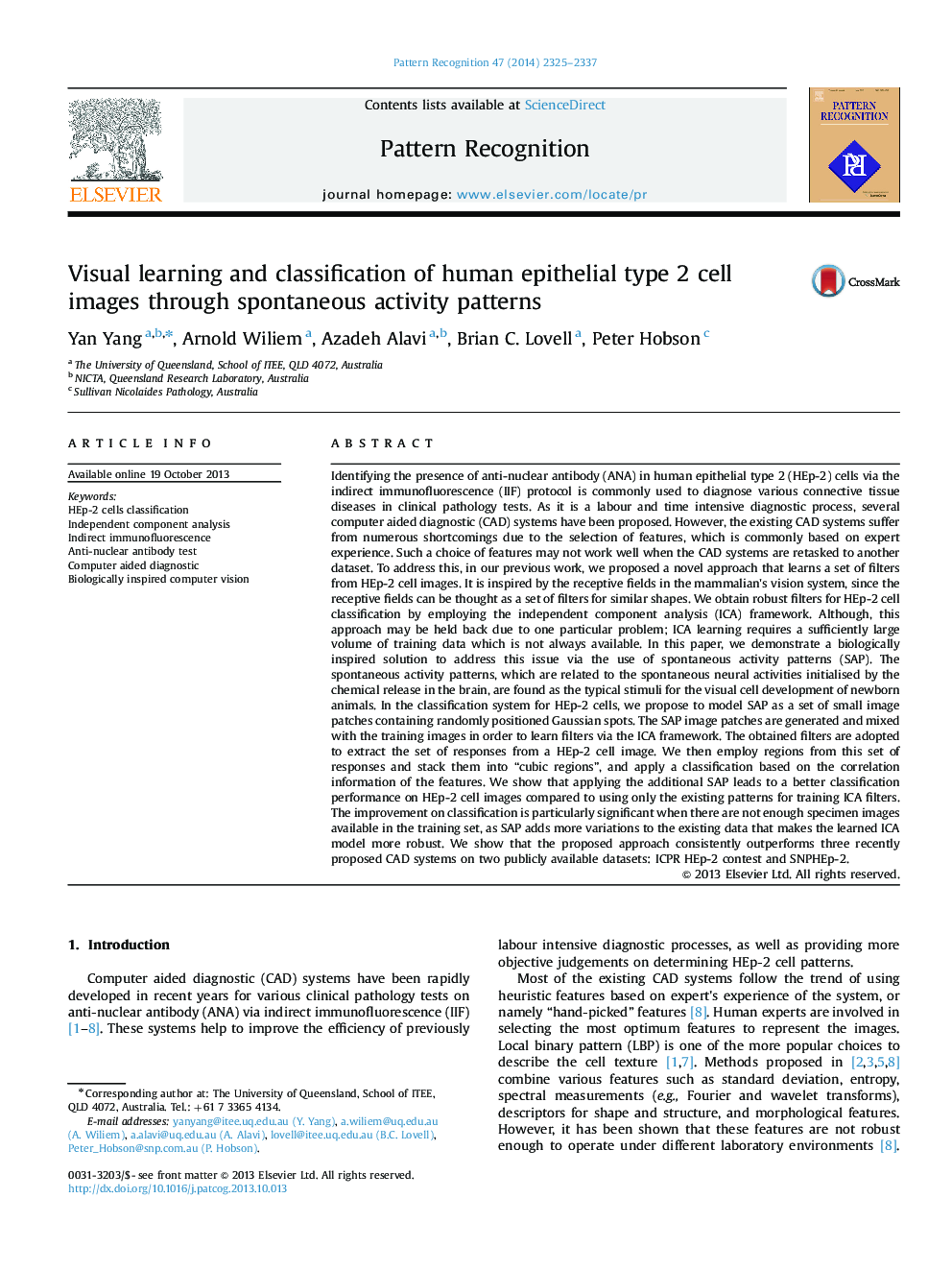| کد مقاله | کد نشریه | سال انتشار | مقاله انگلیسی | نسخه تمام متن |
|---|---|---|---|---|
| 530762 | 869787 | 2014 | 13 صفحه PDF | دانلود رایگان |
• We propose a novel HEp-2 cell classification system inspired by biological vision.
• We apply similar patterns to the spontaneous neural activities of new born animals.
• A generative model of spontaneous activity patterns is proposed.
• Mixing spontaneous activity patterns with cell images leads to a more robust model.
Identifying the presence of anti-nuclear antibody (ANA) in human epithelial type 2 (HEp-2) cells via the indirect immunofluorescence (IIF) protocol is commonly used to diagnose various connective tissue diseases in clinical pathology tests. As it is a labour and time intensive diagnostic process, several computer aided diagnostic (CAD) systems have been proposed. However, the existing CAD systems suffer from numerous shortcomings due to the selection of features, which is commonly based on expert experience. Such a choice of features may not work well when the CAD systems are retasked to another dataset. To address this, in our previous work, we proposed a novel approach that learns a set of filters from HEp-2 cell images. It is inspired by the receptive fields in the mammalian's vision system, since the receptive fields can be thought as a set of filters for similar shapes. We obtain robust filters for HEp-2 cell classification by employing the independent component analysis (ICA) framework. Although, this approach may be held back due to one particular problem; ICA learning requires a sufficiently large volume of training data which is not always available. In this paper, we demonstrate a biologically inspired solution to address this issue via the use of spontaneous activity patterns (SAP). The spontaneous activity patterns, which are related to the spontaneous neural activities initialised by the chemical release in the brain, are found as the typical stimuli for the visual cell development of newborn animals. In the classification system for HEp-2 cells, we propose to model SAP as a set of small image patches containing randomly positioned Gaussian spots. The SAP image patches are generated and mixed with the training images in order to learn filters via the ICA framework. The obtained filters are adopted to extract the set of responses from a HEp-2 cell image. We then employ regions from this set of responses and stack them into “cubic regions”, and apply a classification based on the correlation information of the features. We show that applying the additional SAP leads to a better classification performance on HEp-2 cell images compared to using only the existing patterns for training ICA filters. The improvement on classification is particularly significant when there are not enough specimen images available in the training set, as SAP adds more variations to the existing data that makes the learned ICA model more robust. We show that the proposed approach consistently outperforms three recently proposed CAD systems on two publicly available datasets: ICPR HEp-2 contest and SNPHEp-2.
Journal: Pattern Recognition - Volume 47, Issue 7, July 2014, Pages 2325–2337
